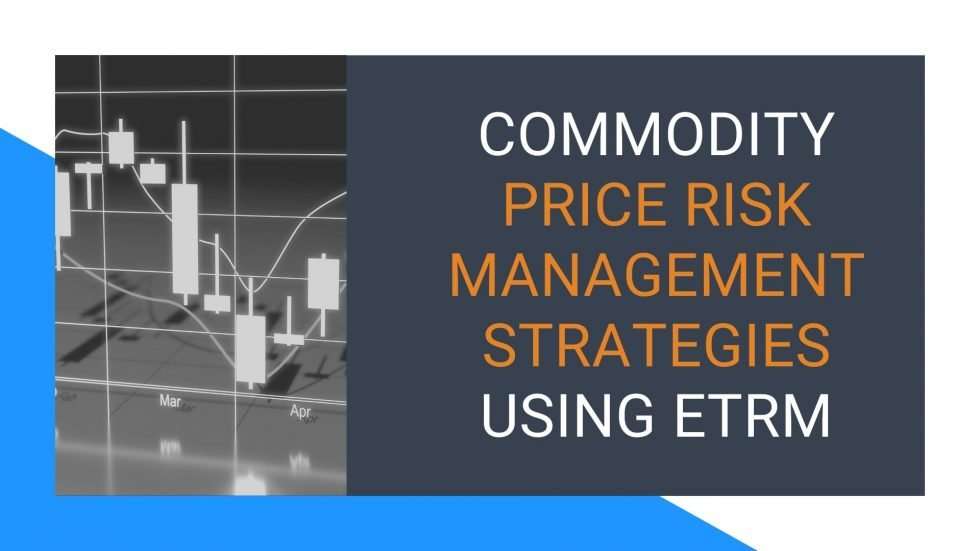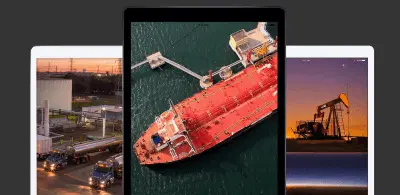Commodity Price Risk Management Strategies Using ETRM
- March 8, 2022
- Posted by: Tom Hedge
- Blogs

Commodities or physical items that can be bought and sold for commercial purposes can have a significant impact on the financial implications of businesses. These commodities, which can include raw materials or finished products can affect the costs and revenues of both producers and buyers. Moreover, with market volatility and price fluctuations, they can swing the budgets and bottom line. So, how do you minimise your risk and practice effective hedging strategies when dealing with significant amounts of commodities such as oil, renewables, metals, livestock, or agricultural produce?
What Is Commodity Price Risk?
Commodity price risk can be considered a financial risk that is driven by external market factors. Simply put, it represents the possibility that the changing commodity prices will result in financial losses for buyers or producers. Fluctuating prices can affect stakeholders across the value chain instantly. For instance, there may be problems for buyers if the commodity prices are higher than expected. Whereas if the commodity prices are lowered, then it becomes a risk for producers or sellers. With that being said, both buyers and producers can hedge or limit this risk in commodity markets.
Factors Influencing Commodity Prices
The prices of raw materials including oil, metals such as steel, copper, aluminium, iron, or agricultural produce such as cotton, soybean, wheat, corn, and so on are affected by various factors including
- Politics: Depending on the political climate, import and export policies as well as taxationor tarrif systems, commodity prices can rise or fall.
- Weather or seasons: A bountiful harvest can lead to fall in commodity prices, whereas, temporary natural mishappenings such as droughts ir floods can lead to increase in commodity prices.
- Technology: Technology in terms of new systems, processes that canhave an impact on how trades are done or commodities are refined and produced can also lead to fluctuations in prices.
- Market information: Various economic indicators and speculations such as inflation, economic output, and even employability rates can have an impact on the commodity prices.
Understanding Price Risk: Oil Companies
As opposed to generally considered scenario, commodity price risk effects businesses as well as consumers and not just the traders dealing in commodity markets. This can be attributed to the fact that all raw materials or processed goods involve buying and selling of various other commodities. Simply put, rise or fall of a commodity price can impact fuel prices at a petrol pump, groceries, and even other household items.
With the continually evolving new environmental regulations and fluctuations in oil prices, oil companies are particularly aware about the price risks. It is because this directly impacts their profit margins. No doubt, some companies do publish sensitivity tables to help the marketers and analysts report the commodity price risk they face. This is particularly important because a well-defined price risk is a critical factor in successful hedging. It helps companies to stick to a pricing threshold at which they should hedge.
Hedging Commodity Price Risks
Heding protects you from price fluctuations by separating the actual physical commodity from the price risk. It simply helps you fix a price (or a hedged price) over a stipulated time period. Based on the commodity index at the end of every months, say, you may either receive or make a payment to match your hedged price. Companies hedge commodity price risk using futures and options contracts. These contracts can be beneficial for both producers and buyers in controlling price uncertainty. So, buyers and producers can protect their margins from fluctuating prices by purchasing contracts that guarantee a fixed price for a commodity. Most importantly, the companies should hedge enough to maintain their profit margins. So, this means, they need to have complete real-time visibility on market insights and their own operations to make the right data-driven decisions. This also requires elimination of human bias and errors.
Smart, ETRM Solutions for Commodity Price Risk Management
Real-time, intuitive energy trading and risk management softwares offer a reliable and effective solution to manage commodity price risks, maximising your margins. The ETRM solutions can be industry specilaised for oil, renewables, wholesale, biofuels, and other commodities. Principally, these set of applications streamline the operations and give a complete control and visibility on the market insights on the go!
Inatech’s Techoil, a trusted choice of oil traders, marketers, risk managers, and financial personnel is a customised solution to handle the volatility of energy markets along with equipping you to adhere to evolving decarbonisation goals.
Techoil is true cloud based and is equipped with an in-built ERP that streamlines and automates your end-to-end functionalities including trading, hedging, financial accounting and taxation, credit instruments trading, risk management, as well as inventory management. To know more about how business are successfully adopting techoil, click here!


